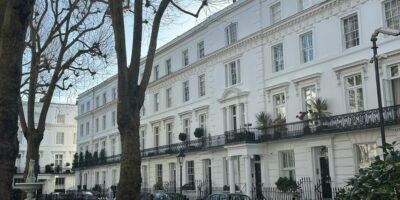
Central London – Is it time for buyers to make a return?
People who work in the central London residential property market have noticed one important trend over the past six months – is it time for buyers to make a return?
One agent recently told me that the percentage of domestic buyers they have been handling has jumped from 58% last year to 65% (and rising) at the moment, driven by both a dwindling number of international buyers and an increasing number of UK ones.
International buyers have retreated in part because of economic problems, international sanctions and political issues at home and that’s particularly true for Russian, Chinese and Ukrainian investors. But there’s also the increasing rules and taxes that have been, and are set to be introduced.
Until recently property taxes were benign but now increased Stamp Duty and amendments to ‘non-dom’ regulations have come in quick succession. Our international clients haven’t been entirely surprised by these but because the sums of money involved, the further you go up the food chain on price, so higher the Stamp Duty and Land Tax (SDLT) bills have soared.
When SDLT rose to 7% our clients absorbed the increase but now that it’s running at between 10% and 12% above £1.5 million (at a sliding scale) many buyers have run up the white flag and said “were not going to take all of this on our own”. And that’s what has resulted in property prices softening recently.
This may all sound familiar to anyone who was around in 2008 when the central London market last softened. Then, like now, it was the cash buyer who was king although back then it was because banks stopped lending. Today it’s because vendors are in a hurry. And that’s because several factors have injected uncertainty into the market including the fast-dropping price of oil, the possible exit of the UK from Europe, and recent exchange rate fluctuations.
But while international buyers may not like this, this has all opened up an opportunity for domestic buyers. Vendors are now more willing to negotiate on price as the number of international buyers dwindles and this has been reflected in London’s prime central market prices.
Traditional prime areas such as Knightsbridge, Chelsea, Belgravia, Hyde Park and Notting Hill have seen prices slip by up to six percent although in more traditional areas such as Mayfair, Marylebone and Islington they have not.
But nevertheless now could be an ideal time to be moving back into London and buy investment stock particularly as some new-build contracts are being sold on at 2011-2013 prices. Over-supply in the market is beginning to take its toll as some of the 22,000 flats to be built in Nine Elms in Battersea start to come on to the market, and London’s ‘new-build premium’ is being eroded as developers look to sell units.
So if you’ve been priced out of London until now, this may be a window of opportunity that could close once confidence returns amongst international buyers.
If you would like to know more about this subject or are looking for the perfect property in London, please contact us


